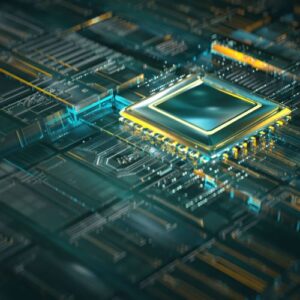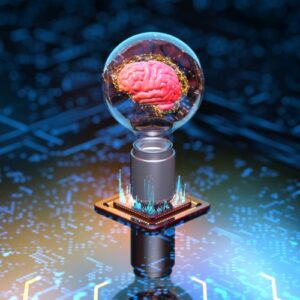Table of Contents
ToggleWhat Is Quantum Computing?
Imagine a computer that doesn’t just say “yes” or “no” but can say both at the same time. That’s quantum computing. Unlike classical computers, which use bits (0s and 1s), quantum computers use qubits. Thanks to superposition, qubits can be 0, 1, or both at once, letting quantum computers tackle complex problems way faster.
But wait, there’s more! Entanglement lets qubits link up, so changing one instantly affects another, no matter how far apart they are. It’s like having a superpower for solving puzzles. Picture a spinning coin—it’s both heads and tails until it lands. That’s superposition in action! Don’t worry—we’ll keep it simple with examples as we go.
Quantum Algorithms: What They Are and Why They Matter
Grover’s Algorithm: The Search Wizard
Shor’s Algorithm: The Code Breaker
3 Tricks to Understand Quantum Algorithms
- Think in Probabilities: Quantum algorithms use probabilities to explore multiple solutions at once, like trying all paths in a maze simultaneously.
- Start Small: Try quantum computing for beginners tutorials online to play with simple algorithms.
- Follow the Leaders: Watch talks from quantum pioneers like IBM or Google to see algorithms in action.
Quantum algorithms are like having a superpower for math—unlocking answers faster than ever!
Quantum Hardware: The Building Blocks

Types of Quantum Hardware
- Superconducting Qubits: Used by IBM and Google, these qubits are tiny circuits cooled to near absolute zero. They’re fast but tricky to keep stable.
- Trapped Ion Qubits: Companies like IonQ trap ions with lasers to create qubits. They’re more stable but slower than superconducting ones.
- Photonic Qubits: These use light particles and are great for quantum communication, but they’re still in early stages.
Building quantum computers is tough because qubits are super sensitive. Quantum error correction helps fix mistakes, but it’s like trying to juggle while riding a unicycle—hard but getting better!
Real-World Example
4 Tips to Grasp Quantum Hardware
- Think of Qubits Like Spinning Coins: They’re both 0 and 1 until measured, just like a coin is both heads and tails mid-spin.
- Temperature Matters: Quantum computers need to be super cold—colder than outer space—to work.
- Check Out Quantum Companies: Follow IBM Quantum or Rigetti to see the latest hardware breakthroughs.
- Don’t Stress the Details: Focus on the big picture—qubits are the key to quantum power.
Quantum hardware is like the engine of a race car—complex but thrilling!
What Is the Quantum Internet?

How Does Quantum Internet Work?
Real-World Example
3 Ways Quantum Internet Could Change the World
- Ultra-Secure Banking: No more worrying about stolen credit card info.
- Global Collaboration: Scientists could share quantum data instantly, speeding up discoveries.
- Quantum Cloud Computing: Access quantum computers from anywhere, like streaming a movie but for supercomputing.
The quantum internet is like a sci-fi dream coming true—secure, fast, and mind-blowing!
Quantum Computing vs Classical Computing: What’s the Difference?
Key Differences
- Bits vs Qubits: Classical bits are 0 or 1; qubits can be both at once.
- Speed: Quantum computers can solve certain problems exponentially faster.
- Use Cases: Classical for emails and spreadsheets; quantum for drug discovery and cryptography.
Think of it like this: classical computers are cars, great for daily commutes. Quantum computers are rockets, built for space exploration.
Applications of Quantum Computing: Real-World Impact
So, what can quantum computers actually do? Here are some applications of quantum computing that could change the world:
- Drug Discovery: Simulate molecules to find new medicines faster.
- Climate Modeling: Predict weather patterns with insane accuracy.
- Financial Modeling: Optimize portfolios and detect fraud in real-time.
- Artificial Intelligence: Train AI models quicker, making them smarter.
For example, Volkswagen used quantum computing to optimize traffic flow in Beijing, reducing congestion. Cool, right?
The Future of Quantum Technology: What’s Next?
The future of quantum technology is bright but still unfolding. By 2030, quantum computers might:
- Break current encryption, sparking a race for quantum-safe solutions.
- Revolutionize industries from healthcare to logistics.
- Connect via the quantum internet for ultra-secure global networks.
But challenges remain, like scaling up qubits and keeping them stable. It’s like building the first airplane—tricky, but the potential is sky-high.
3 Tips to Stay Quantum-Ready
- Learn the Basics: Start with quantum computing for beginners resources online.
- Follow Quantum News: Check out blogs from IBM Quantum or MIT Technology Review.
- Think Big: Imagine how quantum could impact your field, whether it’s finance or art.
The quantum era is coming—get excited!
Wrapping Up: Quantum Computing Is the Future
Phew, that was a journey! Quantum computing is like a puzzle—complex but fascinating. From quantum algorithms like Grover’s and Shor’s to cutting-edge quantum hardware like superconducting qubits, and the revolutionary quantum internet, the possibilities are endless. Sure, challenges like quantum error correction remain, but the future looks quantum-bright.
Ready to explore more? Check out resources like IBM Quantum or WIRED’s Quantum Guide to dive deeper. Share this post to spread the quantum love, and let’s geek out together!
FAQs About Quantum Computing
1. What are quantum algorithms?
2. How do quantum computing algorithms work?
3. What are the types of quantum hardware?
4. What is the quantum internet?
5. How does quantum internet work?
It uses entangled qubits to share data securely—any tampering is instantly detected thanks to quantum physics.
6. What are the latest advancements in quantum computing?
In 2023, IBM unveiled a 433-qubit processor, and Google achieved quantum supremacy. The race is on for more stable, scalable systems.








